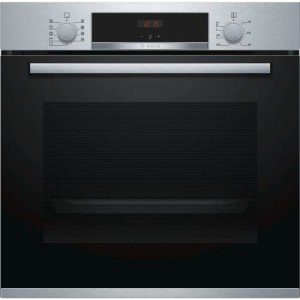The Rise of Built-In Ovens: A Seamless Approach to Modern Cooking
In modern kitchens, where design looks blend perfectly with functionality, one home appliance stands out as a true video game changer: the built-in oven. As property owners and chefs alike continue to seek innovative services that boost their cooking experience, built-in ovens have ended up being progressively popular. This article checks out the benefits, factors to consider, and trends surrounding built-in ovens, highlighting why they are an essential feature in contemporary cooking areas.
What is a Built-In Oven?
A built-in oven is a cooking area home appliance designed to be integrated into the cabinets of a kitchen instead of standing alone. Unlike standard freestanding ovens, which can be moved and placed anywhere, built-in ovens been available in numerous designs and sizes to fit specifically within designated areas. Readily available in single or double setups, these ovens use a structured appearance that complements modern kitchen styles.

Benefits of Built-In Ovens
1. Space-Saving Design
Among the most attractive advantages of built-in ovens is their space-saving design. By incorporating the oven into cabinetry, you can free up important counter and floor area. This is especially advantageous in smaller cooking areas, where maximizing space is important. Built-in ovens can be installed at eye level, making them more available and decreasing the requirement to flex down.
2. Visual Appeal
Built-in ovens contribute to a sleek and cohesive kitchen design. Offered in numerous finishes-- such as stainless steel, black, white, and custom cabinetry-- they can mix effortlessly into the total decoration. This visual appeal improves the kitchen's visual consistency and raises the area, creating a modern-day and sophisticated atmosphere.
3. Boosted Functionality
Many built-in ovens come equipped with sophisticated cooking technologies, such as convection cooking, steam ovens, and smart functions. These enhancements enable versatile cooking choices, making it much easier to accomplish professional-level outcomes in the house. Smart built-in ovens can even link to Wi-Fi, making it possible for users to control the oven remotely, get alerts, and gain access to a range of cooking programs and recipes.
4. Improved Ventilation
Since built-in ovens can be integrated with kitchen area hoods and ventilation systems, they can help preserve better air quality and lower cooking odors. This is particularly substantial for those who love to prepare with aromatic spices and components, as a reliable ventilation system can keep the kitchen comfortable and inviting.
5. Customization Options
Built-in ovens offer a wide variety of customization options to fit private cooking designs and requirements. From professional-grade devices with multiple cooking modes to compact styles for smaller kitchen areas, property owners can pick the oven that fits their specific requirements. Many producers likewise provide adjustable front panels, allowing you to match the oven's look to your cabinets for a truly unified look.
electric integrated oven When Choosing a Built-In Oven
While built-in ovens have lots of advantages, there are necessary factors to consider to keep in mind before buying:
1. Cost
Built-in ovens normally include a higher cost than their freestanding equivalents due to their design and installation requirements. It's essential to consider both the expense of the oven and any additional costs related to cabinets modifications or setup.
2. Installation Requirements
Installing a built-in oven often requires expert assistance, specifically if you need to modify existing cabinets. Make sure that you consider any expenses related to installation, consisting of labor and potential kitchen cabinetry changes.
3. Size and Dimensions
Before buying a built-in oven, measure the designated area precisely to ensure a correct fit. Built-in ovens come in numerous sizes and configurations, so selecting one that aligns with your requirements and kitchen area design is crucial.
4. Lifestyle and Usage
Consider your cooking habits and needs when choosing a built-in oven. If you frequently host big gatherings, a double oven might be more useful. On the other hand, if you have a compact cooking area, a single-wall oven may be enough.
Patterns in Built-In Ovens
The kitchen device market is continually evolving, and built-in ovens are not exempt from emerging trends. Some existing patterns include:
Smart Technology Integration: With the rise of smart home technology, built-in ovens now often include connectivity options. This permits users to monitor cooking development and adjust settings via mobile apps.
Energy Efficiency: As sustainability ends up being a priority, lots of manufacturers are purchasing energy-efficient built-in ovens that reduce energy consumption while maintaining performance.
Multi-functional Designs: Built-in ovens now offer features such as air frying, sluggish cooking, and steaming, offering adaptability that fulfills a wide range of cooking approaches.
Conclusion
Built-in ovens undoubtedly represent a perfect mix of style, function, and benefit in today's kitchens. As more property owners opt for this contemporary solution, the focus shifts to creating a cooking area that is as aesthetically pleasing as it is useful. Whether you are developing a brand-new home or renovating your cooking area, considering a built-in oven might raise your culinary experience and transform your kitchen into a stylish and functional haven. With a variety of options offered and continuous developments in innovation, built-in ovens stay a standout choice for both beginner cooks and culinary lovers alike.
